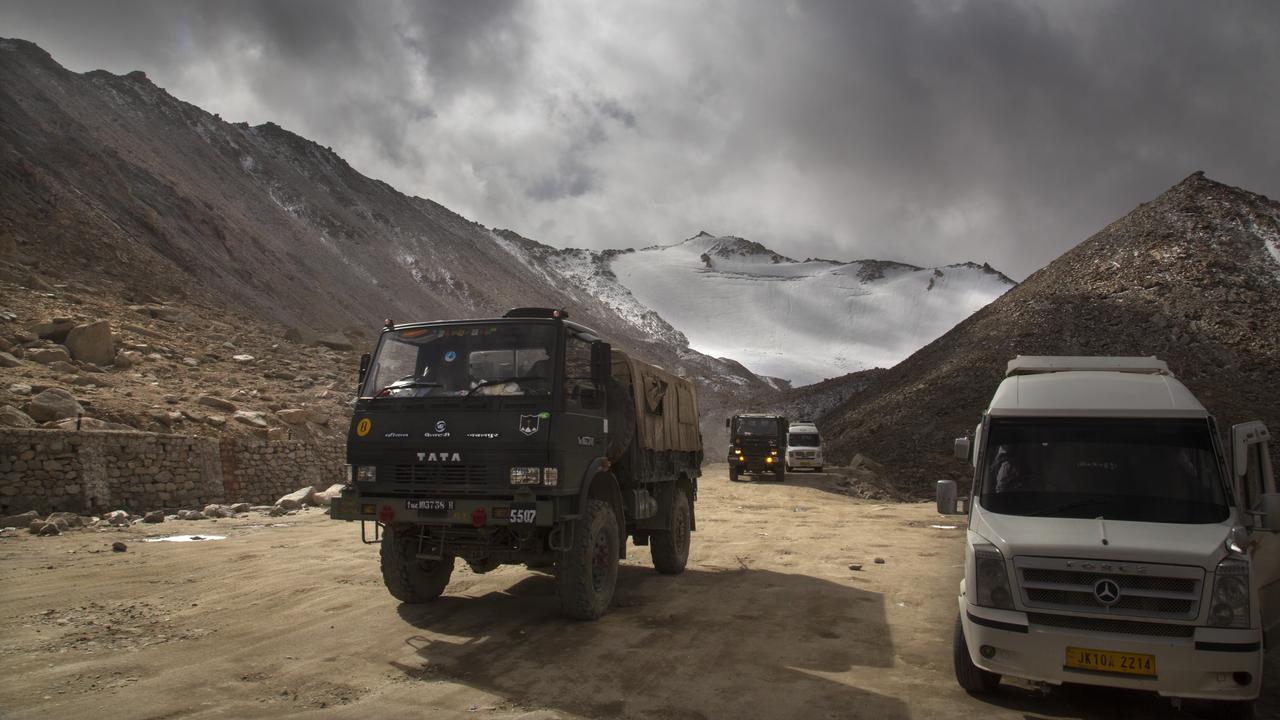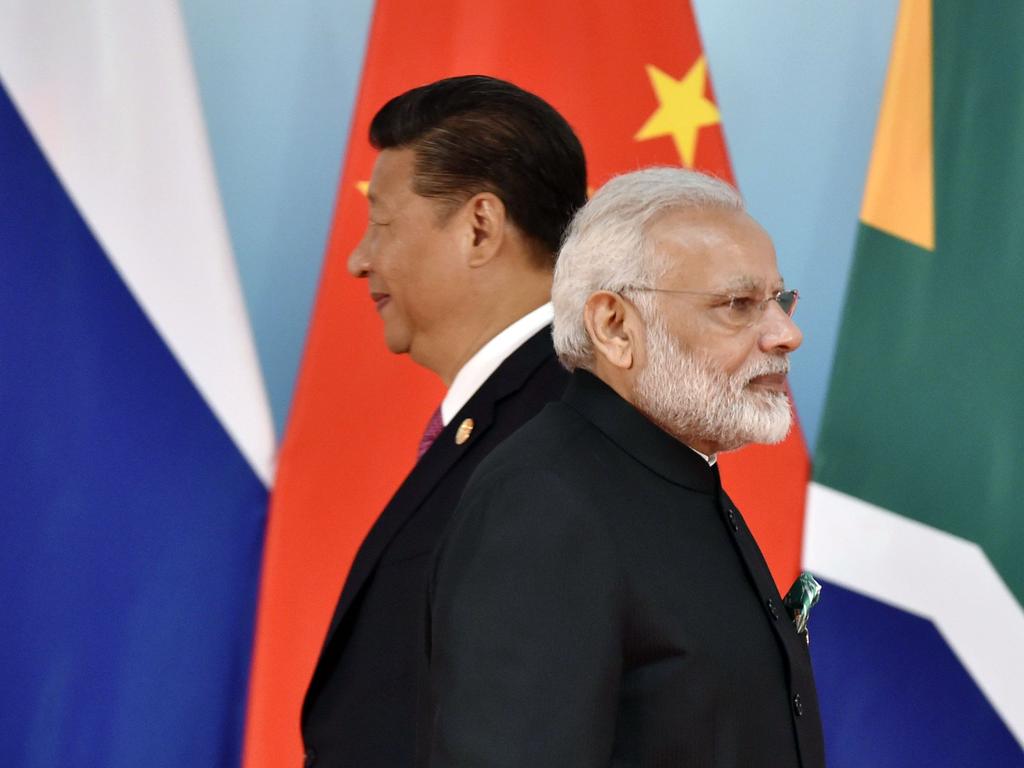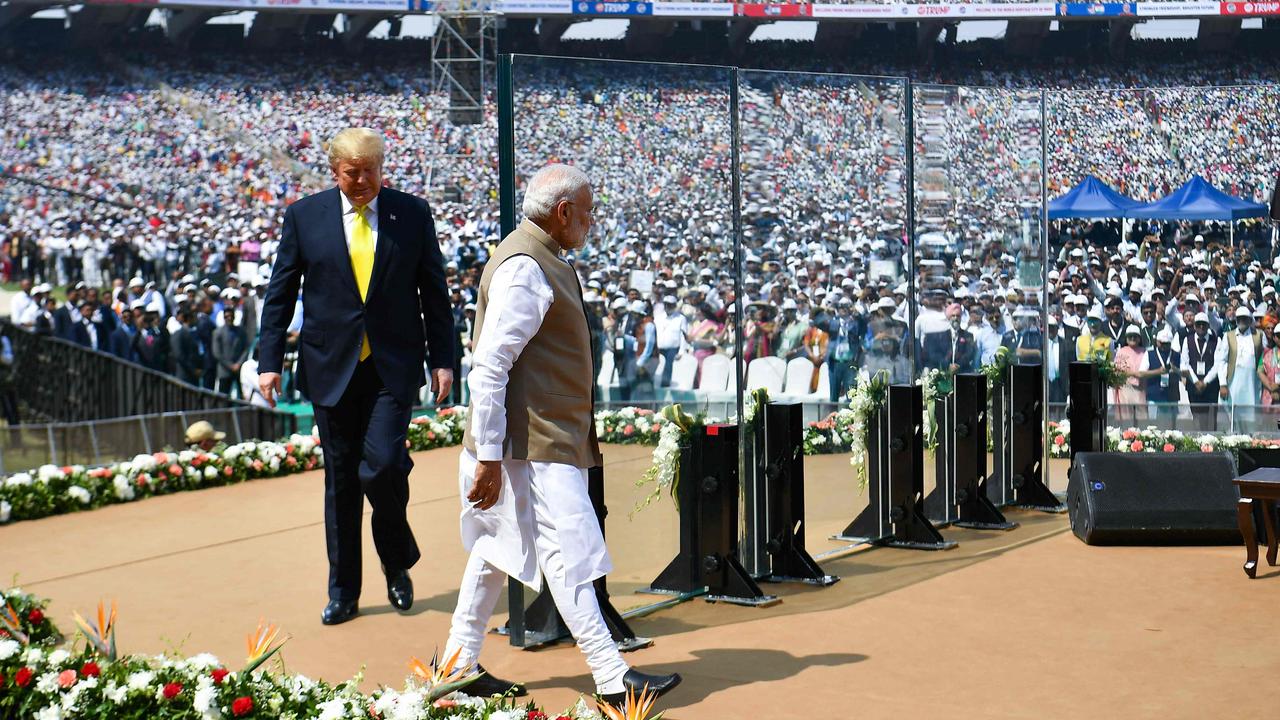China and India’s tense border dispute: What’s behind the massive troop movements and war of words?
India has vowed to “avenge the blood” of its soldiers in an increasingly tense border dispute with China, as troop movements build.
Military leaders from China and India will hold talks today in a bid to de-escalate tensions between the two nations, which have both assembled a mass of troops along a long stretch of border.
But neither side looks overly willing to backdown and uncertainty around what happens next is causing worry globally, thanks to the increasingly bitter rhetoric from Beijing and New Delhi.
China has displayed its increasingly bolshie approach to foreign affairs in recent months in the wake of criticism over its handling of the coronavirus pandemic ramped up.
As well as smacking trade restrictions on Australia, it has thrown barbs at the United States and President Donald Trump, while also clamping down on democracy protests in Hong Kong and making sinister overtures towards Taiwan.
India is also keen to assert its dominance and defend its border, while cozying up to Washington and extending trade and defence ties with Australia.
Friction over the border isn’t new, but the current climate is, foreign policy experts say – and that makes the situation highly volatile and unpredictable.
WHAT’S GOING ON?
India and China share one of the world’s longest border stretches and an agreed Line of Actual Control (LAC) separates the two nations.
Both have accused the other of breaching the LAC in recent weeks, leading to skirmishes and an escalation in shows of force.
RELATED: Beijing ready to deploy troops ‘within hours’ to tense border stretch with India

China’s military began its border build-up in mid-April while the world, including India, was distracted with the worsening COVID-19 crisis.
New Delhi became angry when People’s Liberation Army (PLA) forces intruded into Indian territory at multiple points in late April and early May, in what local media described as “a well-planned operation”.
China had quickly amassed troops, built bunkers and installed “other fortifications”, leading to a “violent clash” in the Pangong Tso region on May 5 and 6 that left several soldiers on both sides badly injured, the Times of India newspaper reported.
Pangong Tso is one of several areas of build-up along the disputed stretch of border, which has been a source of contention for decades.
But tensions have increased recently due to the construction of a 255-kilometre road on the Indian side, with three dozen bridges providing strategic links – for business and trade, New Delhi insists, but also clearly for military movements.

A WAR OF WORDS
This past week, various Chinese-controlled media outlets have published images of troop mobilisations, including a photograph of a plane load of heavily armed soldiers on their way to the region.
At the weekend, state broadcasters aired vision of PLA military movements in the region featuring planes and trucks filled with soldiers.
State media called it a demonstration of “China’s capability of quickly reinforcing border defences when necessary”.
Social media was also filled with videos purporting to show scuffles between troops, although some have been debunked and labelled as propaganda or troublemaking attempts.
''Under PM Modi's leadership, any intrusion into the the borders of India will be punished. Some used to say that US and Israel were the only countries which were willing and capable of avenging every drop of the blood of their soldiers. Modi Ji has added India to that list.'' pic.twitter.com/BJiilnvcSW
— BJP (@BJP4India) June 8, 2020
A number of senior Indian Government figures have become increasingly aggressive in their public commentary.
Home Affairs Minister Amit Shah spoke at a rally on Monday and declared that “any intrusion into the borders of India will be punished”.
“Some used to say that US and Israel were the only countries which were willing and capable of avenging every drop of the blood of their soldiers,” Mr Shah said.
“(Prime Minister Narendra Modi) has added India to that list.”
The same day, India’s Defence Minister Rajnath Singh said, “I would remind everyone, India’s leadership will not let our self-respect suffer. India’s policy is clear, we won’t hurt any country’s integrity and dignity.
“At the same time, we will not let any country to hurt our integrity.”

A NERVOUS WAIT
Overnight, troops on both sides made subtle movements back from standoff points along the LAC, particularly in the Galwan and Hot Springs areas of Ladakh, The Indian Express reported.
However, there have been no signs of retreat from either side in the crucial and volatile Pangong Tso region.
The Indian Express quoted a government source as saying, “We note the developments along the LAC and will be monitoring them closely in the next few days.”
The border territory has long been disputed, with a bloody war between China and India erupting in 1962.
A period of relative peace that followed has been interrupted on several occasions in recent years with minor conflicts and political stoushes.
But numerous points along the LAC are heavily militarised on both sides.
A NEW DYNAMIC
Relations between India and China have deteriorated over the past decade as New Delhi sought to firm up its ties with Washington.
Foreign Policy magazine reports that the political manoeuvring was borne partly out of India’s concerns over Beijing’s growing political and economic influence.
Its activities in strategic ports in the Indian Ocean region have also not gone unnoticed.
Beijing’s efforts to strengthen ties with India’s old foe Pakistan also caused the shaky friendship to sour.

Chinese President Xi Jinping made a state visit to India in 2014 and Mr Modi gave permission for political exiles from Tibet to protest – an unprecedented action.
In contrast, when US President Donald Trump visited this year, the PM threw him a welcome rally attended by 100,000 people and broadcast to some 50 million TV viewers.
“One thing is clear – while India and China have faced off in the region before, nobody knows what’s coming next,” Foreign Policy wrote.




